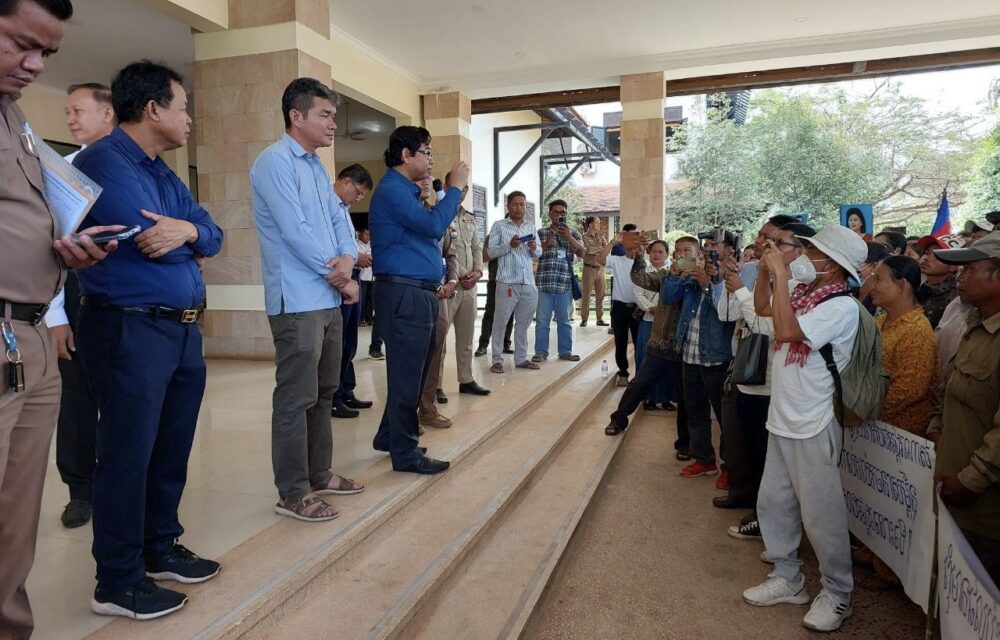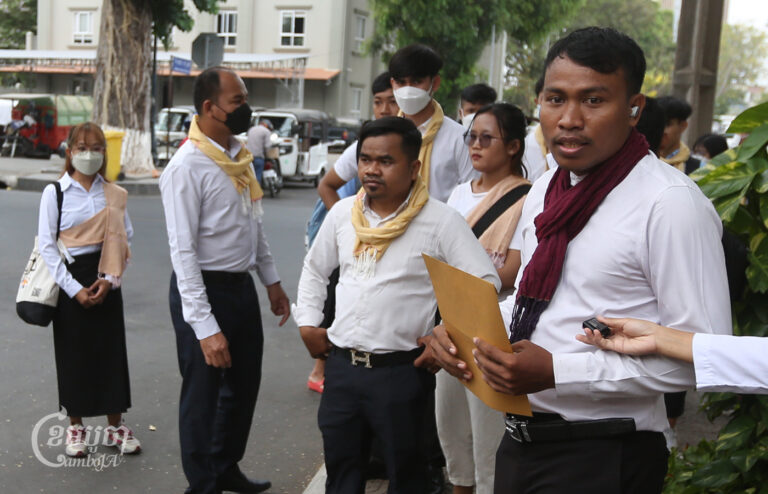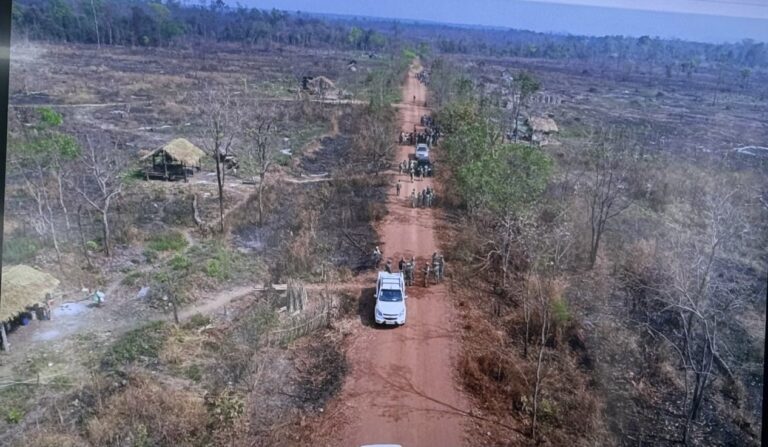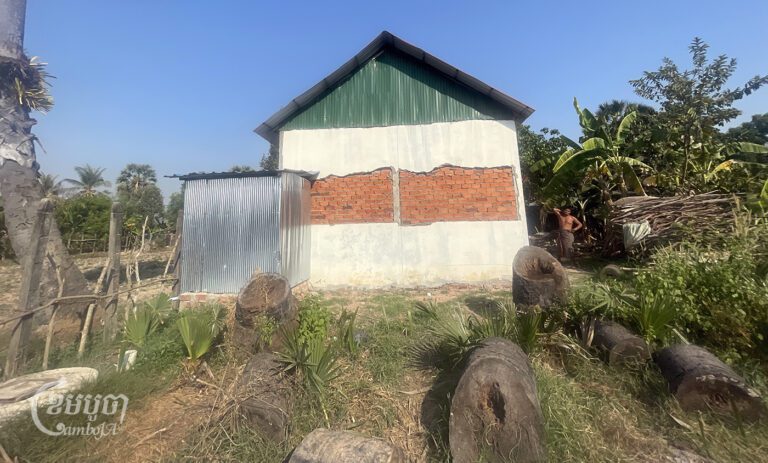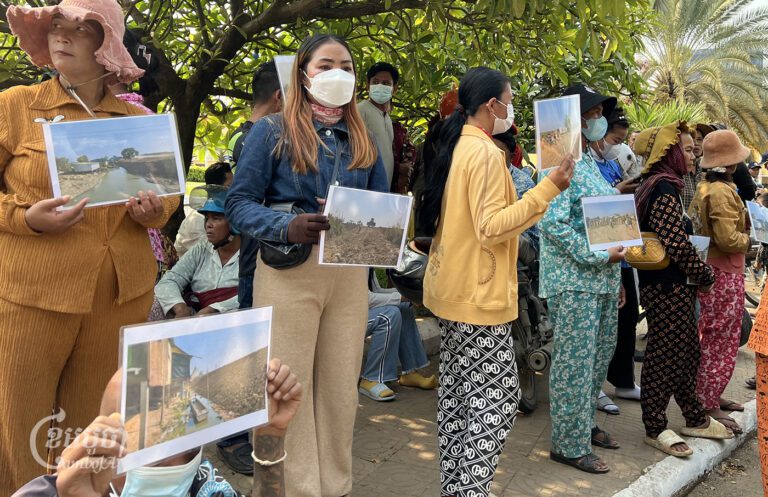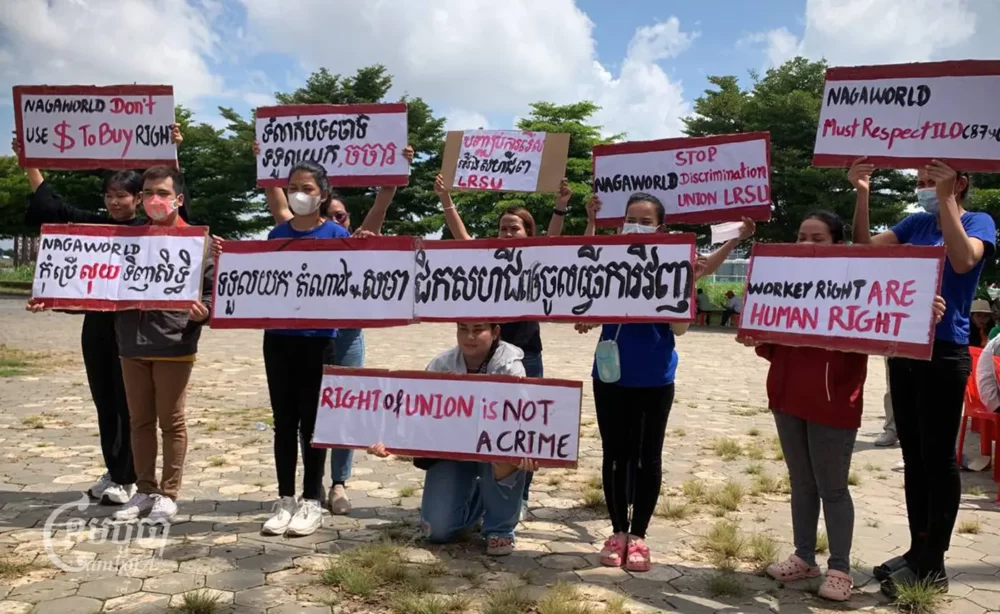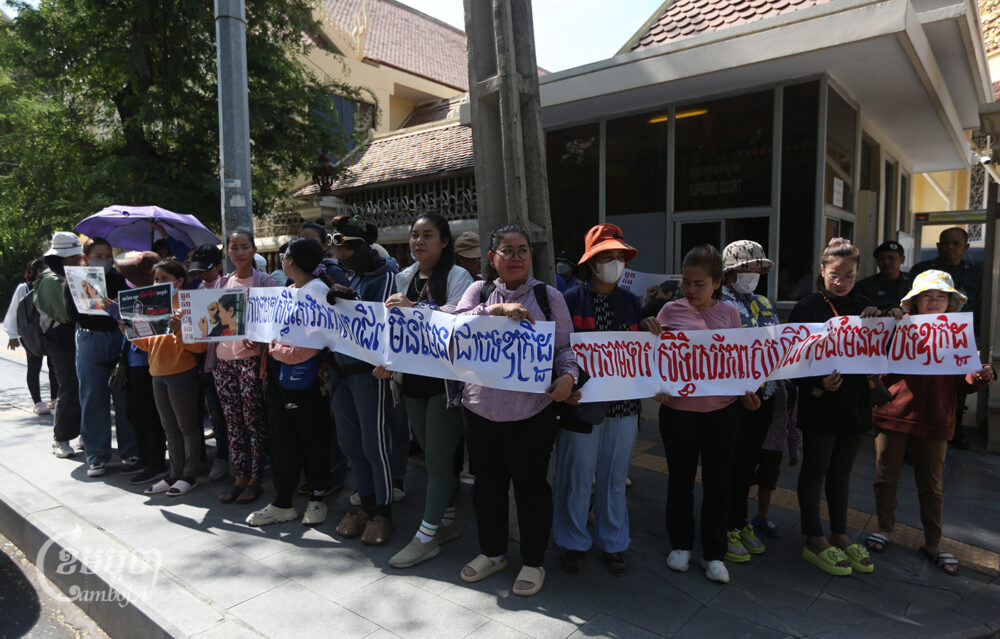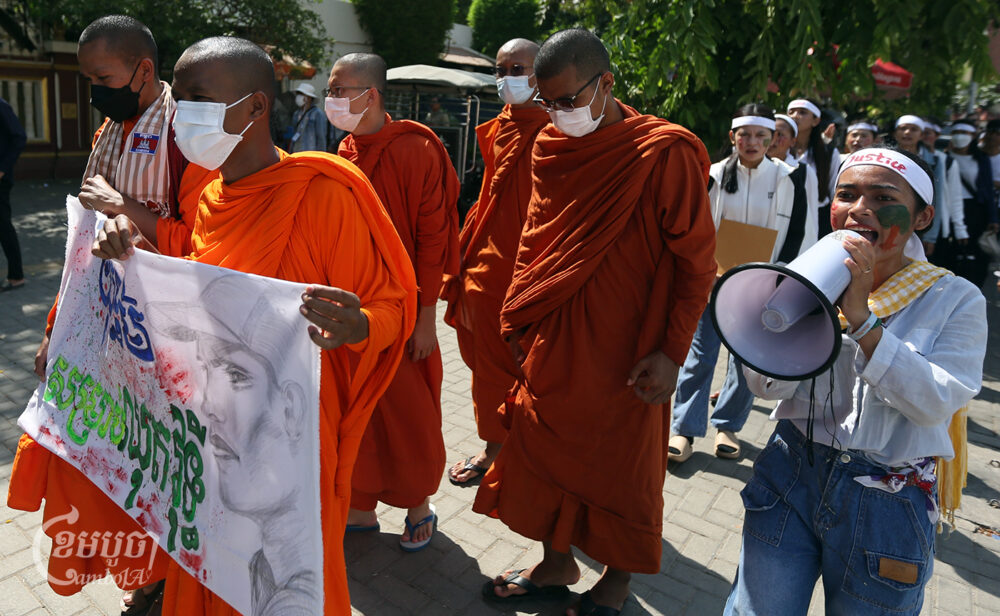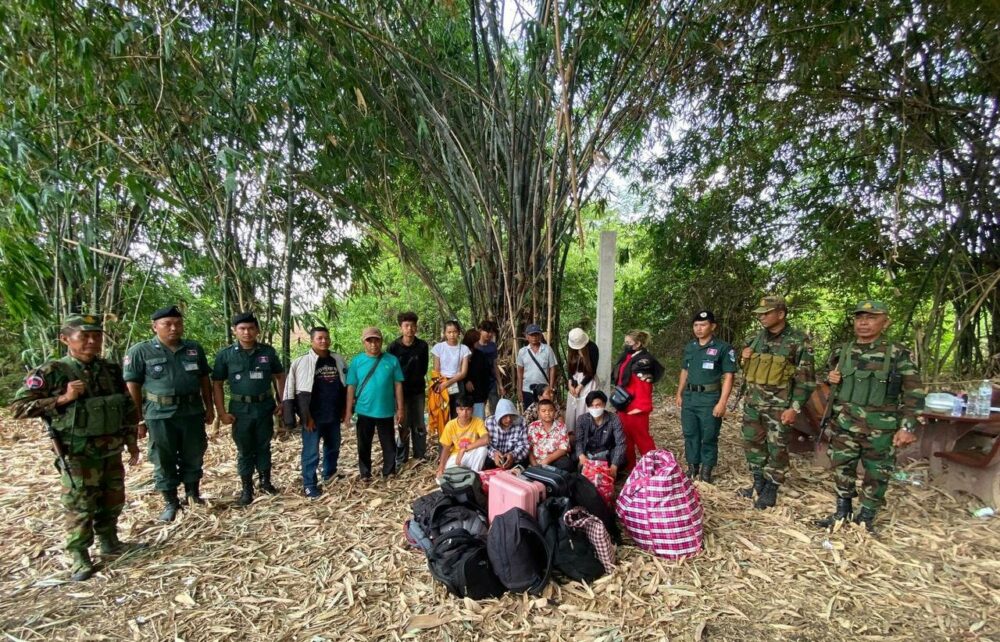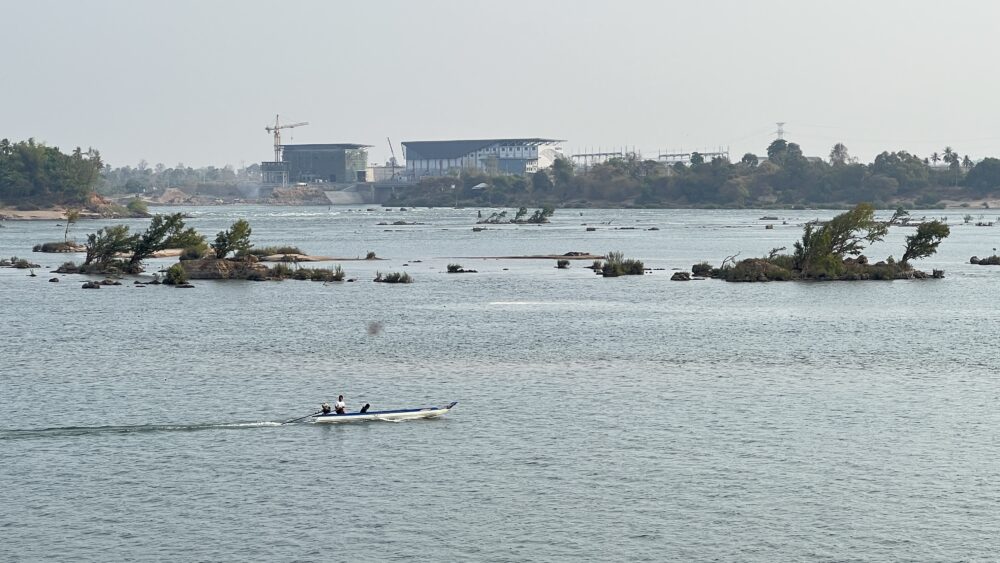On Monday hundreds of families living inside the Angkor archaeological park protested against the Apsara National Authority, which manages the park, for barring them from doing construction and other activities that support their livelihoods.
Puok district authorities and police unsuccessfully attempted to prevent the villagers from marching to the provincial hall with a petition, according to protestors. Residents held banners that read “We are dying to live in our homeland” and “We must not allow the Apsara authority to continue to oppress our community.”
Siem Reap provincial administrator Ly Vannak confirmed that his office received the petition and will forward it to the relevant ministries, including the Ministry of Culture and Fine Arts, which oversees the protected area of the Angkor temple site.
“The provincial authority does not have the right to make decisions regarding construction under the Apsara authority’s jurisdiction,” he said.
The petition, reviewed by CamboJA News, states that the residents are living “in fear” of Apsara, without the right to build structures on their land. The document requests that Prime Minister Hun Manet and Unesco intervene in the situation, and create a section of land that is not controlled by Apsara where residents have the right to do construction and farm to improve their lives.
4,730 families from the Angkor Wat area have moved to the Run Ta Ek relocation site, according to the Ministry of Land Management, Urban Planning and Construction, contradicting a figure of 9,000 relocated families reported in a September UNESCO document. An investigation by CamboJA News found that many families were forcibly evicted despite the government portraying the resettlements as voluntary.
While some communities have been permitted to stay on the grounds of the temple complex, the Apsara authority has prohibited them from building new structures or making additions to their houses.
“We had already submitted a petition at the district and commune levels but there was no solution. We decided to bring it to the provincial governor,” said Pat Savorn, one of the protesters who attended the march.
He has lived about 10 kilometers from the Angkor Wat temple site for his entire life, in Khnat commune of Puok district, where his parents were also born. Savorn hopes that new provincial governor Prak Sophoan will resolve the challenges villagers are facing.
While residents of his area have not been asked to move to a relocation site, he still faces many restrictions from Apsara. He described how Apsara authorities have barred his community from digging wells, building barns, making additions to their homes or installing toilets.
“They have restricted the right to even build a fence around our house, which is not allowed by the Apsara authority,” Savorn said. “We are suffering a lot, those of us under the control of the Apsara authority.”
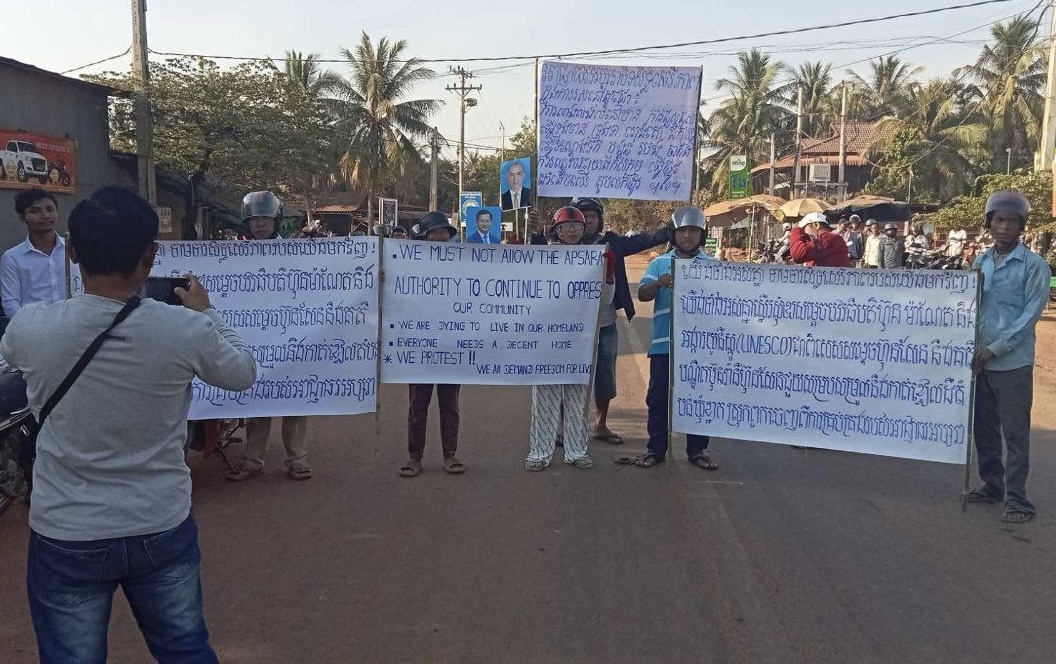
In the past, Savorn felt Apsara was more understanding of the needs of villagers and more willing to compromise, but in the last few years Apsara has been more restrictive of villagers.
According to an investigation by Amnesty International, in 2022 land registration “ramped up dramatically” in Angkor and authorities began evicting a reported 10,000 families. Authorities cited the need to protect the temple site from damage that could jeopardize the site’s Unesco World Heritage status, according to the report.
Another Khnat commune resident Mam Sam Ol, 45, also believes that Apsara has hampered the rights of villagers where he lives, restricting construction on areas Apsara claims will impact the world heritage site.
“In my opinion, we are under pressure. It has impacted the finances of the families,” he said, adding that Apsara has prevented him from building a fence around his house since 2015.
Sum Map, secretary of state and spokesperson at the Culture and Fine Arts Ministry, denied that the ministry has persecuted the people living in the protected areas of the temple complex.
“Usually, they [villagers] come to do construction in areas where they have been banned, and when we go to stop them, they make accusations against us. There is no oppression,” he said.
He cited the Royal Decree on the zoning and management of Siem Reap and Angkor, which prevents development and expansion of buildings in specific zones to protect and enhance the temple sites.
“For people who have relocated to new homes on land that was previously unoccupied, we banned what are considered illegal constructions,” Map said.
A spokesperson for the World Heritage Centre wrote in an email to CamboJA News that Unesco had “transmitted” the petition to Cambodian authorities.
“The organization and territory of intervention of Apsara are the sole responsibility of the Cambodian government,” the spokesperson wrote. “Unesco has no decision-making role on this subject and is not in a position to make a comment within the framework of its mandate.”
In Kongchet, a supervisor based in Banteay Meanchey for the human rights group Licadho, observed the protest. He said villagers want to send a message to the government to resolve their challenges, which have been caused by Apsara authority.
“This has violated their right to home ownership. They were advocating legally for government leaders to resolve their problems by allowing them the right to manage [property],” he said. “They live with difficulties. They can’t fix their houses when they suffer from heavy rains causing floods or strong winds.”
Apsara authority spokesperson Long Kosal could not be reached for comment.
“[New] constructions are not allowed within the world heritage site and they would need to get permission to build them,” Kosal said in an interview with CamboJA News in November. “But, it doesn’t mean that when you apply for permission you will get an approval.”
On January 11, the government issued a sub-decree officially creating the new city of Run Tak Ek Techo Sen in Siem Reap province, one of two relocation sites created to house families evicted from the Angkor park area. The city in Siem Reap province was formed by taking Run Ta Ek commune from Banteay Srey district and Ballaing commune from Prasat Bakong district.
In November, Amnesty International called the government’s relocation efforts “forced evictions in disguise, carried out on a massive scale and a gross violation of international human rights law.” The human rights group’s investigation found that the Run Ta Ek relocation sites lacked “basic sanitation and other essential infrastructure,” making it “inadequate and in violation of international human rights standards.”
Amnesty International also labeled Unesco a “responsible actor,” stating that Unesco was aware of the forced evictions but has not “publicly condemned” nor “even acknowledged that they are taking place.”
After publication of this story, a World Heritage Centre spokesperson wrote in an email that Amnesty International’s statement that Unesco was aware of the forced evictions but did not publicly condemn nor acknowledge them is “completely untrue.”
Update: This story was updated January 18, 2024 at 11 a.m. ICT with a response from a World Heritage Centre spokesperson received after publication of the story.


